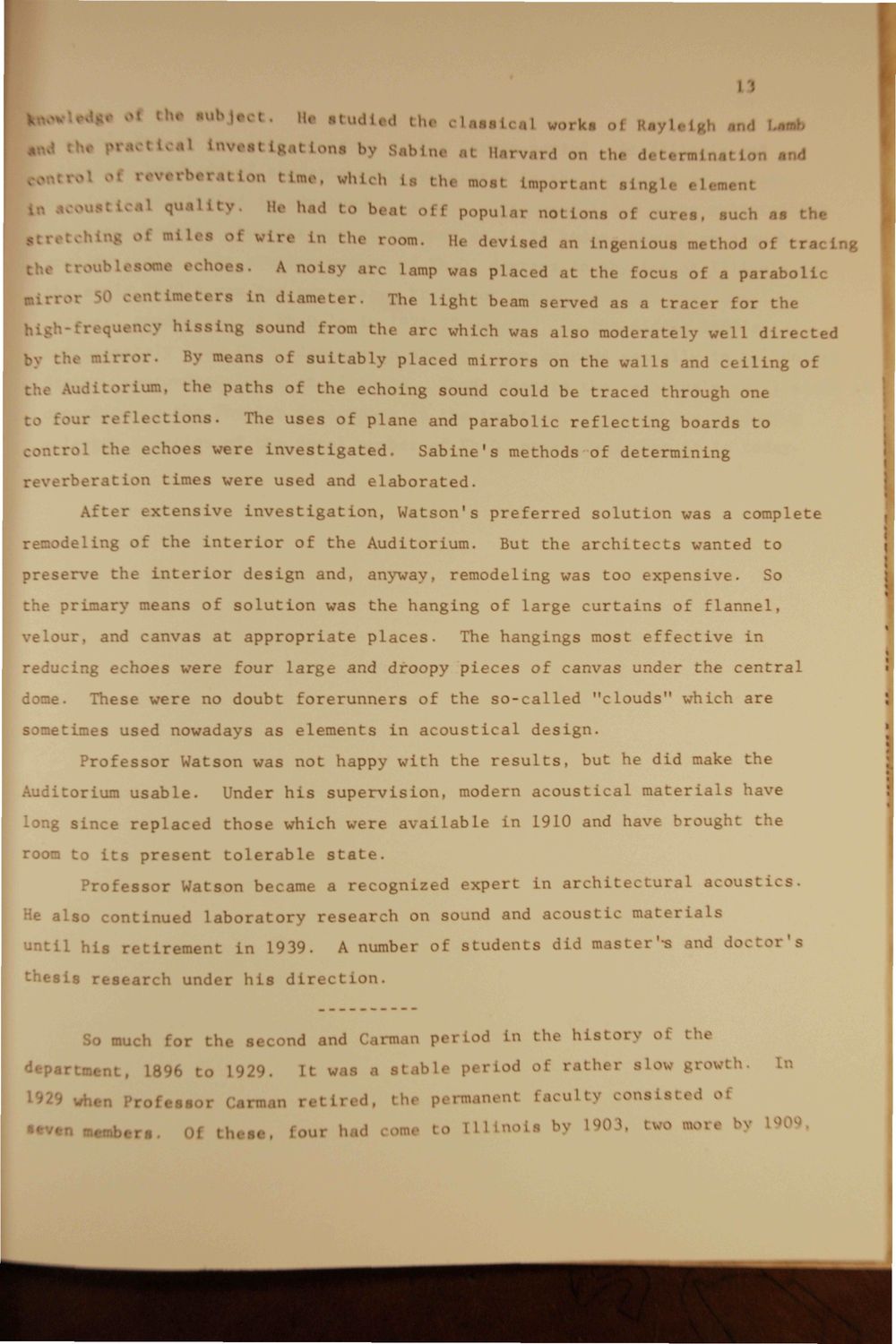Caption: Book - Century of Physics (1973)
This is a reduced-resolution page image for fast online browsing.

EXTRACTED TEXT FROM PAGE:
• ! v a the sub )ed tl i.emb est Lgationi by Sabine at Harvard on the determination and '• « •" Mi \u W M l wh h Ls the most Important single ilament notions of o n e s , sue as the qua! lll#i tv had to beat ofi popuL n the room. He devised an ingenious method of tracing hoe A noisy arc lamp was placed at the focus of a parabolic meter. The light beam served as a tracer for the Deters Ln d v h the m t Uv i sing >und from the arc which was also moderately well directed f suitably placed mirrors on the walls and ceiling of By means orlun, the paths of the echoing sound could be traced through one The uses of plane and parabolic reflecting boards to Sabine's methods of determining to four reflections. c 1 the echoes were investigated. rberation times were used and elaborated. After extensive investigation, Watson's preferred solution was a complete remodeling of the interior of the Auditorium. But the architects wanted to So preserve the interior design and, anyway, remodeling was too expensive. he primary means 01 solution was the hanging of large curtains of flannel, elour. and canvas at appropriate places. The hangings most effective in » educing echoes were four large and droopy pieces of canvas under the central ne. These were no doubt forerunners of the so-called "clouds" which are ! * ometimes used nowadays as elements in acoustical design. Professor Watson was not happy with the results, but he did make the orium usable. Under his supervision, modern acoustical materials have * i • long since replaced those which were available in 1910 and have brought the room to its present tolerable state. Professor Watson became a recognized expert in architectural a He also continued laboratory reseai h on sound and acoustic materials un I his retirement Ln 1939. A number of students d 1 master'-s and di 's sties aesis res- rch under his direction. So much for the second and Carman per departmen en 1896 to 1929. rofeSSOl > Ln the his t o w of the d In It was a stable period of rather slow growl i. i I, ths permanent facull i on man i sevi members. 01 these, four had m to 111 s by 1903, two aors
|